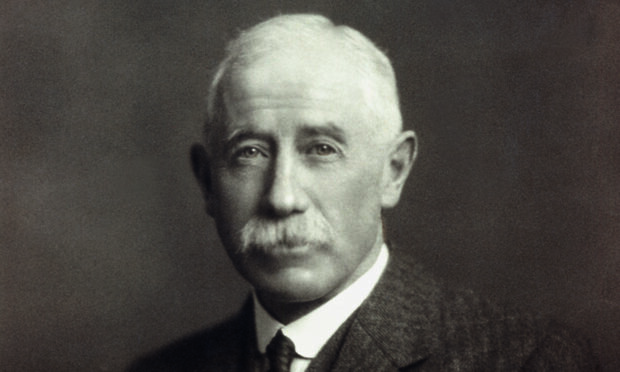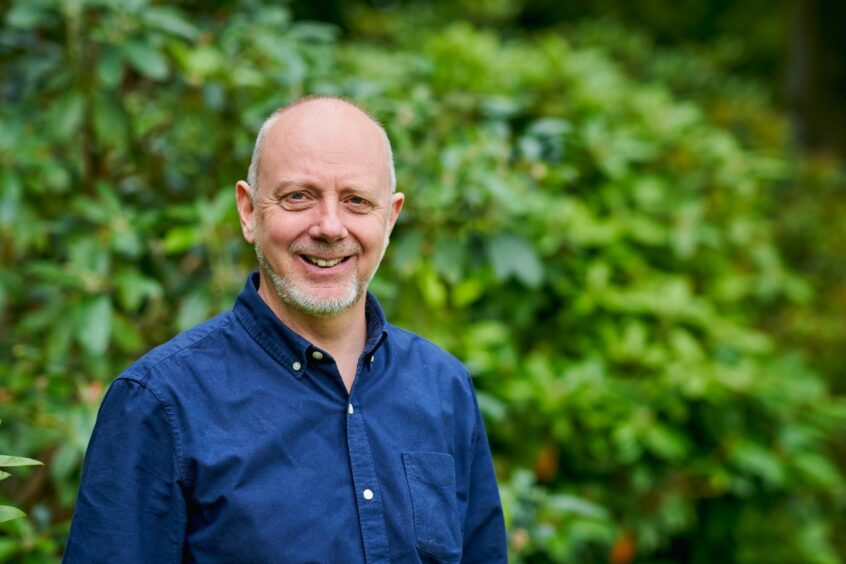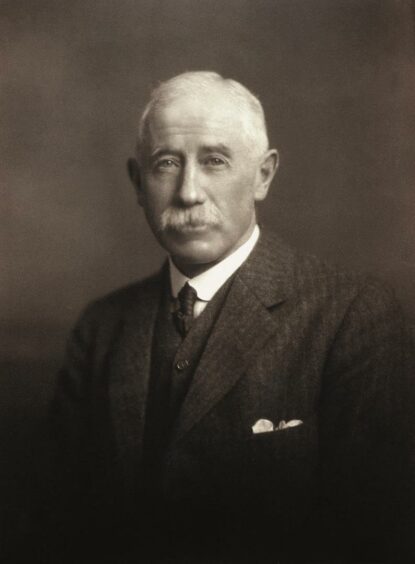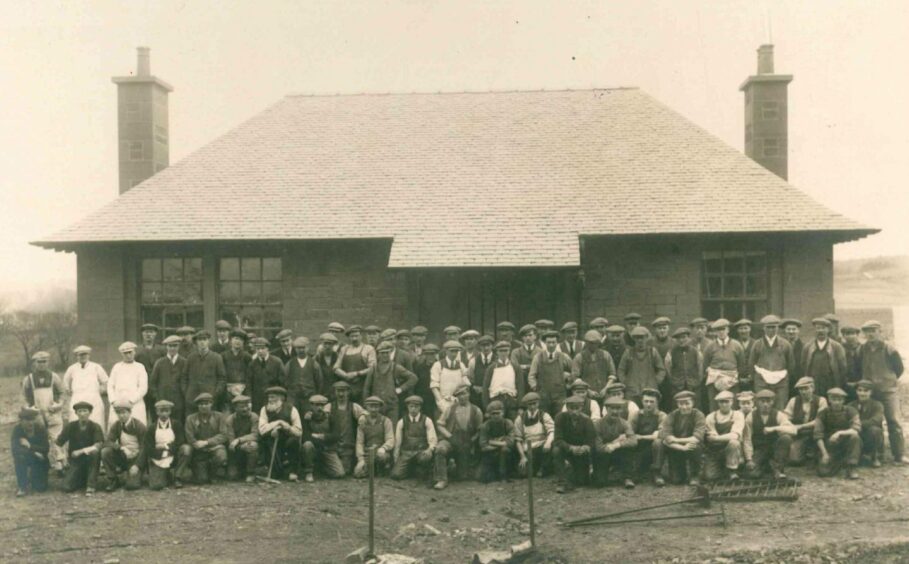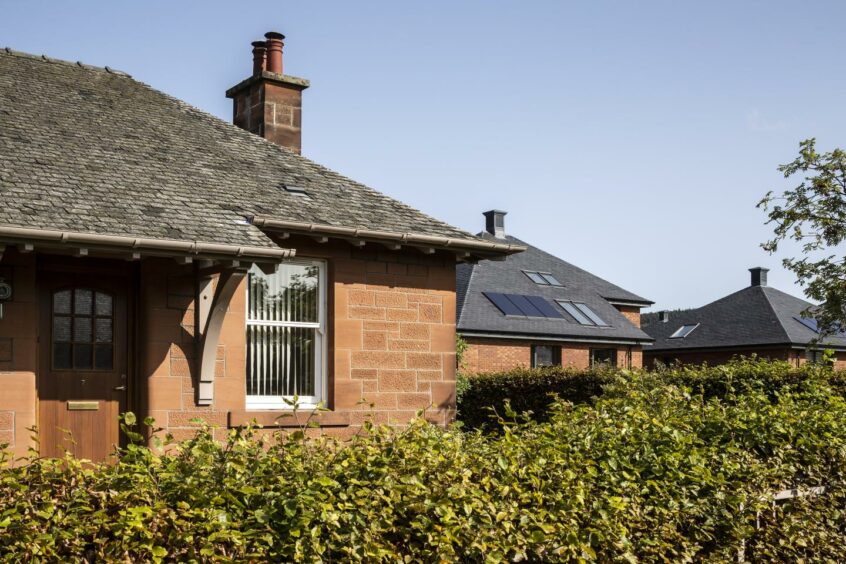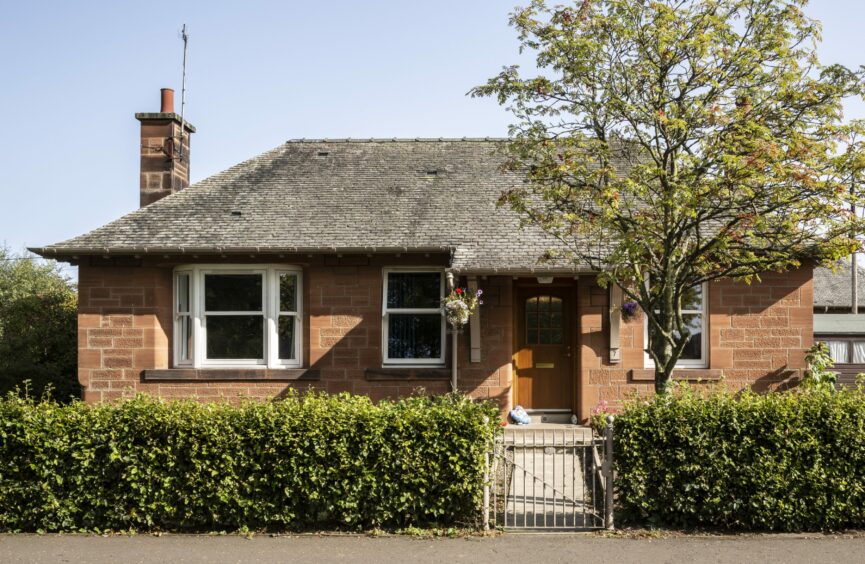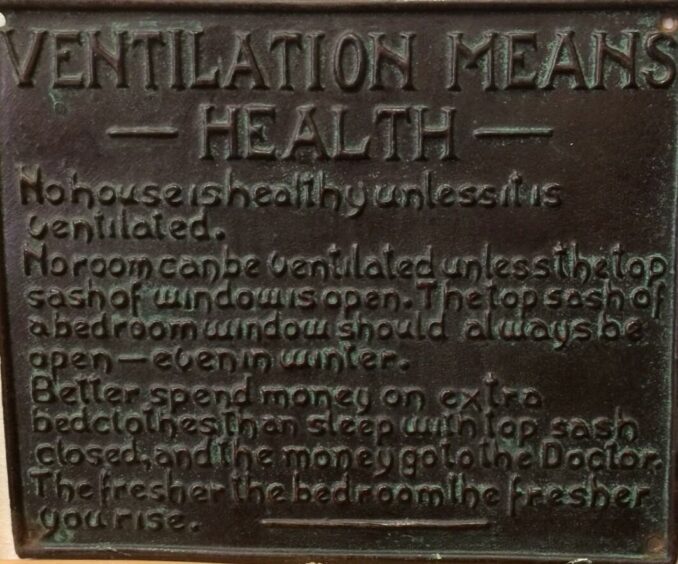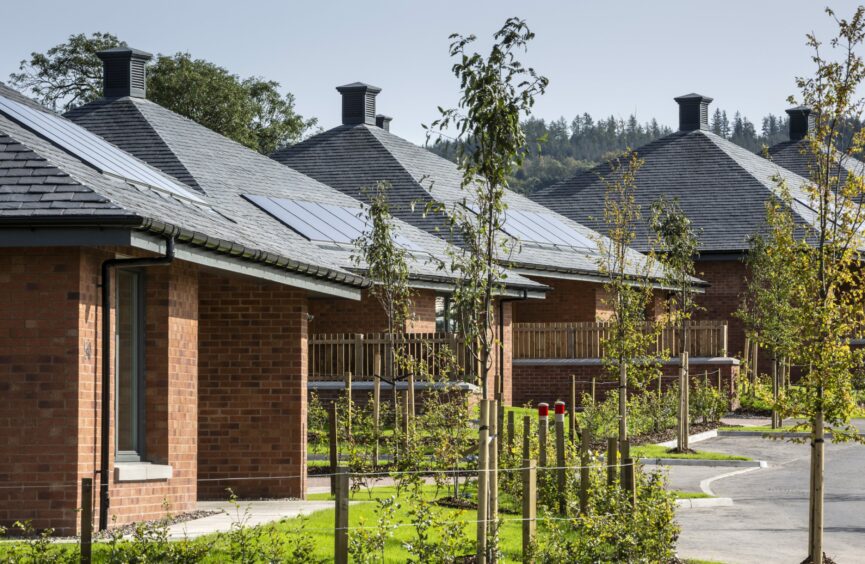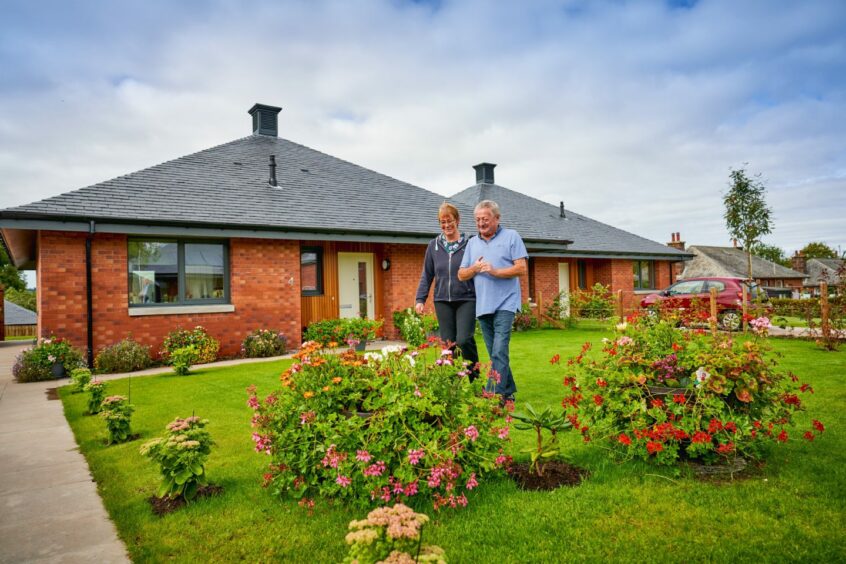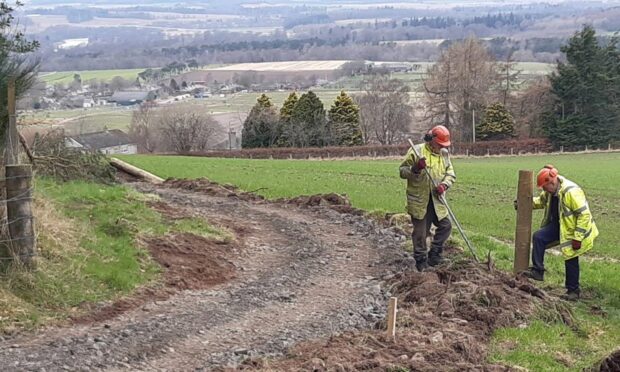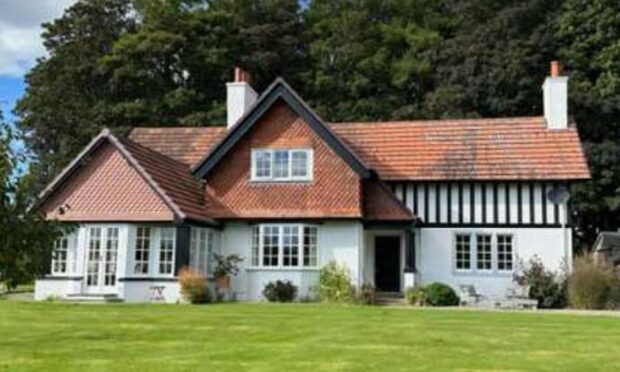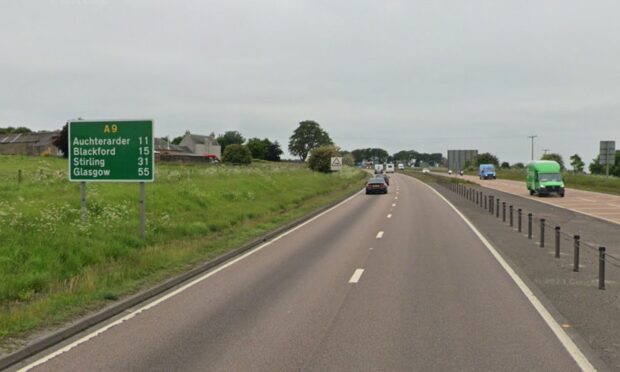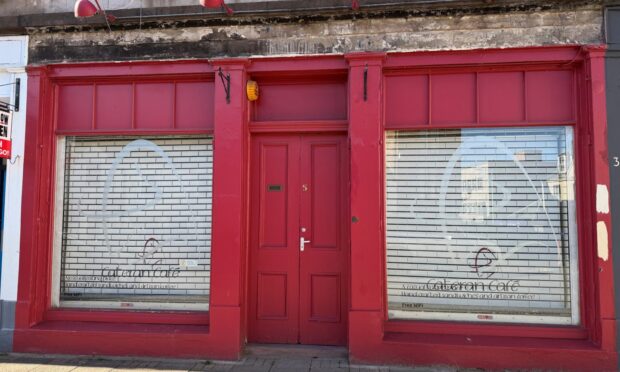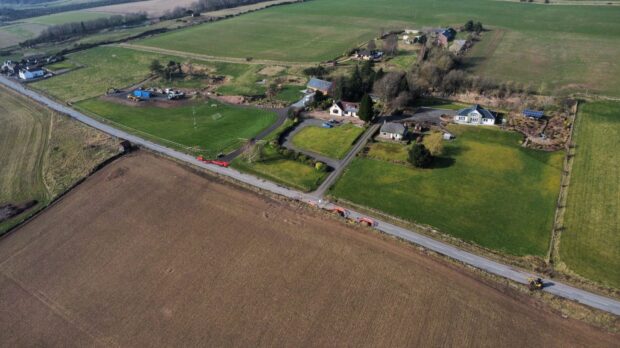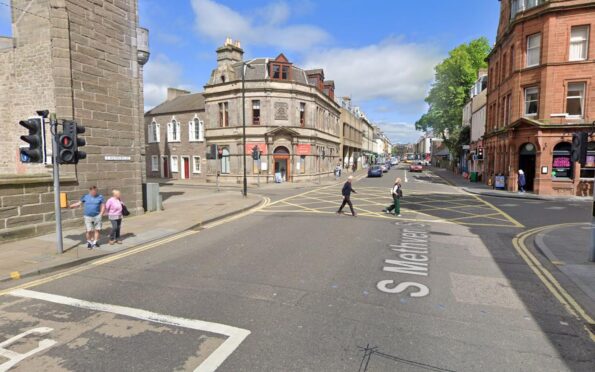Almost 100 years after whisky magnate and philanthropist A.K. Bell built his first houses in Perth, Michael Alexander speaks to the CEO of the Gannochy Trust about the ongoing relevance of his work.
Founded in 1937 by whisky distiller and philanthropist A.K. Bell, the principle aims of the Gannochy Trust were to improve lives and support communities in Perth and Kinross.
With the 85th anniversary of the trust’s formation on the horizon, these values of collaboration, boldness and imagination remain as important to the trust today as they did at the time of its formation.
New chief executive
Andy Duncan took over as chief executive of the Gannochy Trust on November 1.
A chartered building surveyor who worked at Stirling University for 17 years where he was director of property management, he joined the Gannochy Trust as estate manager in 2014.
He was heavily involved in a new housing development completed by the trust last year.
Despite the prominence the name A.K. Bell has with Perth, however – for example, the A.K Bell Library – he’s often amazed how many people are unaware of the history.
“I think it is a strange thing that even many folk who’ve lived in Perth all their lives, some don’t realise who A.K. Bell was and the differences the trust has made to Perth, Perthshire and Tayside,” he says.
“In the 1920s, he built the original housing estate that was just a philanthropic project of his. He operated it through the Bells whisky company.
“He bought the land around his house at Kincarrathie, near Scone, to build the new houses, and also to protect the green belt of Perth and create these areas for public use. That was pre-trust days.
“Then in 1937 he decided to put all that holding including the houses into trust with the main thrust at that stage being the management of the houses and to ensure they were maintained to a high standard in perpetuity.
“He also wanted public spaces to be retained as what he called in those days places of public resort, so people had somewhere to go to enjoy the countryside.”
Business and philanthropy
Born in 1868, Arthur Kinmond Bell was educated at Perth Academy then later moved to Craigmount School in Edinburgh.
In 1895, he joined the family business Arthur Bell & Sons as a partner, following in the path of his father and grandfather.
By the time of his father’s death in 1900, he and his brother Robert had doubled the whisky company’s profits, and, as the eldest son, he became managing director.
Expanding the business despite the setbacks of the Great Depression and Prohibition in the USA, he became governor director in 1921 when the company became a limited company.
Having married Miss Camilla Bruce in 1899, and looking likely they wouldn’t have children with his wife already in her late 30s, it’s been speculated that this contributed to his desire to make a lasting mark, leading to his philanthropy.
In 1938, a year after setting up the trust and four years before his death, Bell was awarded the Freedom of Perth.
It was then that his approach to philanthropy was summarised, when he said: “After a man has a roof over his head and his bread and butter is fairly well assured and has a surplus, I think you will agree with me that it is only common sense that he should spend part of that surplus for the benefit of his native city.”
His first major project in this direction was the building of the Gannochy Housing Estate between 1923 and 1931.
The aim was that the properties would benefit the hardworking of a younger generation, who had survived the harshness of the Great War and were now looking to better themselves.
Lasting principles
Andy Duncan notes that those principles remain central to the work of the Gannochy Trust to this day, which, as well as housing, distributes £5 million each year to charities.
“There were 149 houses built in the 1920s,” he explains, “and they were very distinctive in terms of how they looked.
“Generally they were all bungalows and he brought in red sandstone which doesn’t predominate here – we think from Ayrshire, and slate from Cornwall.
“He was very influenced by the Garden Cities movement and some of the industrialists who built houses for their workers – places like Rowntree’s New Earswick, and Cadbury’s Bourneville, although he didn’t specifically build houses for Bells employees.
He mentions in one of his earlier wills having built them for the working people of Perth.”
The town council were building houses at the same time as the original Gannochy Estate.
What’s striking, however, is that the houses Bell was building cost around three times the amount the town council were spending on their housing at the time.
Investment in well-being
The high standards of the original construction is evident in the quality of those houses still occupied today.
Floors and joists are “are like the day they went in” while unique design features like making sure all the houses faced south-west to maximise daylight continue to reap dividends. Detached and well-spaced out, he set them in large plots.
Bell was also passionate about sport- particularly cricket – and on the estate he built the Doocot Cricket pavilion and two cricket pitches which are still in operation today.
Describing the Gannochy Trust as “fairly unique” as a private landlord with affordable rents, Andy says the 282 houses now across the estate include the original 1920s houses plus three lots of “entry level” sheltered housing built in the 1970s, 80s and 90s.
The sheltered housing was built to allow their ageing tenants to “downsize” which then released the larger three bedroom houses for new families to come into the estate. This has bolstered the concept of a “lifetime neighbourhood” on the estate.
New development
The most recent development was instigated in 2012 when, to mark the 75th anniversary of the trust, the trustees decided to instigate a fairly major extension to their housing.
Work on the 48 houses started in 2018 and, following a Covid-19 delay, the award-winning development was completed last year.
“As well as being passionate about the outdoors and giving people big gardens so they could get outside, Bell was also ahead of his time thinking about health and wellbeing and how housing contributed quite significantly to that,” says Andy.
“When he built the houses he put a brass plaque up in every one that said ‘Ventilation means health’ and went on to explain how people should open their windows to ventilate their house properly.
“He had an understanding that if you are in a house that’s poorly ventilated and there’s these bugs going about, it’s not particularly healthy.
“What we wanted to do was bring that ethos into our new development as well.”
Importance of ventilation
Andy says the trust become aware of research by Glasgow School of Art which found air quality inside many modern houses was pretty poor, because, in pursuit of energy efficiency, many new builds were effectively being made as air tight as possible.
“The studies found the mitigating ventilation in a lot of new houses just isn’t working,” he says, “so we wanted to look at how we could bring A.K. Bell’s ethos into the 21st century and build something that is energy efficient and healthy as well.
“A large part of the design of our houses is trying to take those principles he had from the 1920s and bring them into the modern context.
“A large part of the design of our houses is trying to take those principles he had from the 1920s and bring them into the modern context.
“The sort of thing that we’ve done is we have an advanced ventilation system.
“The houses have a very distinctive cowl on top which enhances natural air flow through houses.
“We’ve constructed the walls from breathable wall construction, rather than having air tight barriers which is relatively unusual. And we’ve included what we call sit-out-eries: so all the houses have a large recessed area at the front of the house which is south-facing.
“This allows people to sit outside but they are sheltered under the roof which is set back into the house. They’ve been fantastically popular with our tenants.”
Green debate
Conscious of the recent green energy debate around COP26, Andy confirmed the recent development had incorporated gas boilers after debating the issue “long and hard”.
However, they had been “future proofed” with photo-voltaic panels fitted on the roofs and provision made for gas boilers to be replaced relatively simply if other technologies come on stream more widely.
Working with Glasgow School of Art and Kingdom Housing Association, they are monitoring eight houses for two years to see how well the new technologies such as breathable wall construction perform in terms of air quality and energy efficiency.
It’s hoped these methods could be picked up by other housing providers, spreading the legacy of A.K. Bell yet further.
